icobrain ct is intended for automatic labeling, visualization and volumetric quantification of segmentable brain structures from a set of brain non-contrast computed tomography (NCCT) images. This software is intended to automate the current manual process of identifying, labeling and quantifying the volume of segmentable brain structures identified on CT images.

Images shown for illustrative purposes only.
Clinical Workflow
icobrain dm (Dementia)
icobrain tbi (Traumatic Brain Injury)
For CalanticTM 1.0, no prior study will be examined for comparison.

As input, icobrain ct uses computed tomography images (non-contrast CT (NCCT)).
Appropriate Series for CT
- Kilovoltage peak (kVp) 80-140
- Slice thickness 0.4 – 5mm
- Pixel spacing 0.3 – 1mm
*Scanning Parameters are derived from the HCP Manual icobrain ct 6.2.0 v.12. To request these documents, please contact the vendor.
For Dementia
- normalized volume of the whole brain (sum of white and gray matter)
- normalized volume of the lateral ventricles
For Traumatic Brain Injury (TBI)
- unnormalized measurement of the midline shift
- unnormalized volumes of NCCT hyperdensities (epidural, subdural, intraparenchymal and their total); and largest hyperdensity component
- normalized volumes of the left and right lateral ventricles, and of the fourth ventricle
- normalized volumes of basal cisterns (suprasellar, quadrigeminal, prepontine and ambient)
- asymmetry index between the left and right lateral ventricle
EU risk class and CE marking
icobrain ct have CE marking (CE1639) and risk class Im.
Reimbursement status
Not reimbursed.
Contraindications
No contraindications given.
Target population
Patients with a neurological disorder.
Intended user
Healthcare professionals who treat and/or diagnose patients with a neurological disorder.
Limitations
Artifacts and anatomical deviations: Please make sure the images are free of artifacts and do not show evidence of surgical intervention (i.e., craniotomy, craniectomy, burr holes, external ventricular drains (EVD), intracranial pressure monitoring devices, etc) or other concomitant pathologies (e.g., such as a tumor, haemorrhages, etc), as these might have a negative impact on the results of fully automatic measurements. Even without artifacts or extensive deviations in anatomy, automatic measurements are subject to errors, intrinsically associated with the measurement device.


Discover icobrain ct
Now available as part of Calantic’s Neuro Service Line. Contact us today to learn more.











